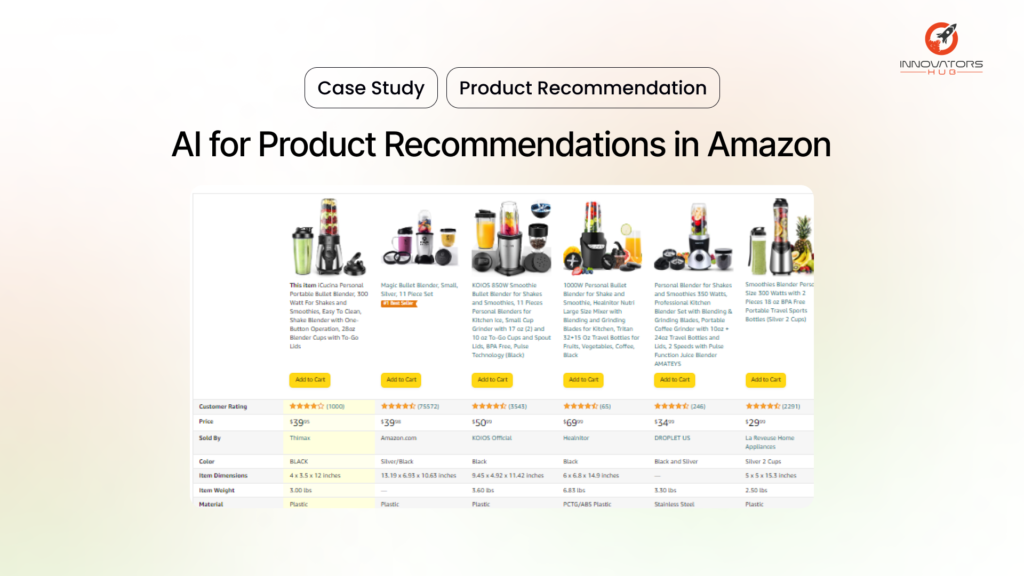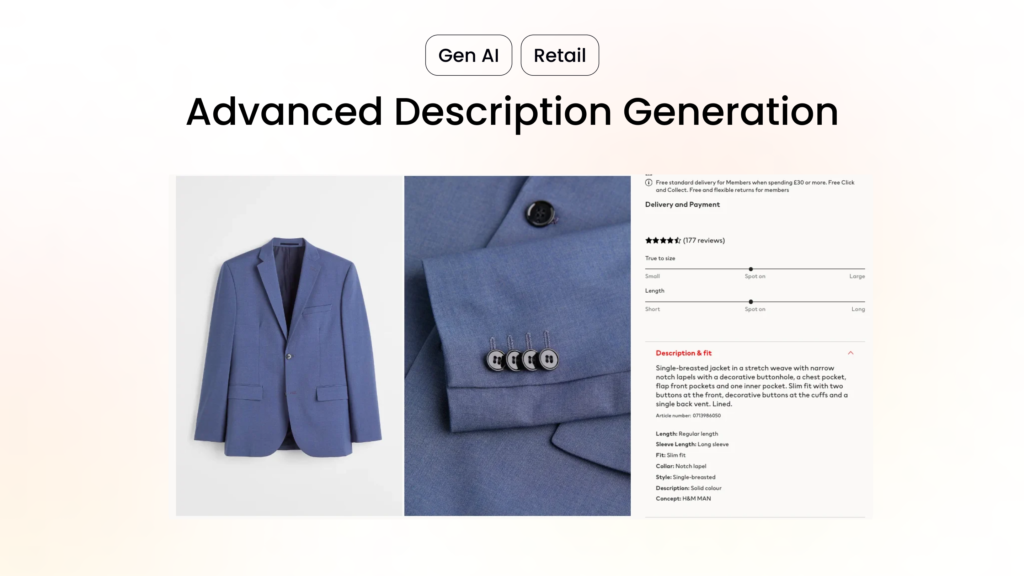Artificial intelligence (AI) is revitalizing the retail industry by optimizing operations, enhancing customer engagement, and improving customer experience (CX). Retailers face the challenge of catering to digitally savvy customers with changing preferences who demand personalized and seamless shopping experiences. AI is the perfect solution for meeting these expectations by understanding customer needs and offering tailored services.
Besides enhancing customer experiences, AI helps retailers navigate challenges like geopolitical unrest, economic instability, and climate change. By 2025, 80% of retail executives expect their companies to use intelligent automation technologies, with 40% already doing so, according to Analytics Insight. Retailers must adopt a practical approach, focusing on areas where AI can have the most significant impact, rather than expecting AI to solve all issues instantly.
1. Personalized Product Recommendations
AI enables retailers to analyze vast amounts of customer data, including browsing and purchase history, to offer personalized product recommendations. This improves the shopping experience and boosts customer loyalty. For example, Amazon uses AI to tailor its homepage and marketing campaigns, leading to 35% of purchases driven by recommendations.

With AI, retailers can predict what a customer might want next. By analyzing buying patterns, AI algorithms can suggest products likely to appeal to individual shoppers and send tailored product suggestions directly to customers’ inboxes, enhancing the customer experience and increasing sales and retention.
2. Virtual Try-Ons
AI and augmented reality (AR) technologies facilitate virtual try-ons for clothing, accessories, and more, helping customers visualize products, reducing return rates, and increasing satisfaction. Warby Parker, for instance, uses AI and AR for virtual eyewear try-ons, ensuring accurate fit and style through real-time adjustments.

The technology also extends to the beauty industry, where makeup brands use AI to let customers virtually try on different shades and products before making a purchase. This innovation enhances the shopping experience and reduces product returns, providing a more satisfying and efficient way to shop.
3. Intelligent Product Search
AI enhances product search by understanding context and intent, providing accurate and personalized search results. Zalando uses AI algorithms to analyze customer data and tailor search results, improving the shopping experience and reducing abandoned carts. Traditional keyword-based searches can sometimes return irrelevant results, whereas AI-powered search engines interpret the nuances of natural language queries, making results more relevant to the user.
Leveraging machine learning, search engines continuously improve by learning from user interactions. This enables them to better predict which products customers are searching for, enhancing user satisfaction and boosting sales.
4. Visual Product Search
AI-driven visual search technology allows customers to search for products using images, making the process faster and more intuitive. ASOS’s Style Match feature uses visual search to match images to products, enhancing customer convenience and engagement. Customers can simply upload a photo or use their camera to find similar products, eliminating the need for text-based queries.

This feature is especially beneficial for fashion and home decor retailers, where visual appeal is significant in purchasing decisions. Retailers can also use visual search technology to detect trends and popular styles. By analyzing the images customers upload, businesses can gain insights into current trends and adjust their inventory accordingly.
5. Voice Search
Voice search, powered by AI, allows customers to browse and purchase products using voice commands. Walmart integrates voice commerce with its app and physical stores, providing a seamless shopping experience through voice-activated assistants. With the rise of smart speakers and virtual assistants like Amazon’s Alexa and Google Assistant, voice search is becoming increasingly popular.

Retailers can capitalize on this trend by optimizing their websites for voice search, ensuring their products are easily discoverable through voice commands. Voice search offers convenience for busy customers who may not have time to type out a search query, allowing them to simply speak their request and receive instant results, enhancing the overall shopping experience.
6. Advanced Description Generation
AI can generate unique, compelling, and SEO-optimized product descriptions, saving time and ensuring accuracy. H&M uses an AI system called “Cherry” to streamline content creation and maintain consistency, making the process more efficient for large retailers.

AI-generated descriptions can also be more engaging by analyzing customer reviews and feedback to highlight key features that resonate with potential buyers. This automation improves SEO, drives more traffic to websites, and tailors high-quality descriptions to each product.
7. Dynamic Pricing and Promotions
AI optimizes pricing by analyzing data on demand, competitor pricing, and sales volume. Amazon’s Price Optimizer adjusts prices multiple times a day, boosting sales and profits. Dynamic pricing allows retailers to quickly respond to market changes, automatically raising prices when demand spikes and lowering them when sales are slow.
AI also identifies optimal times for promotions. By analyzing historical sales data, it predicts when customers are most likely to buy and offers targeted promotions to boost sales during those periods.
8. Personalized Loyalty Programs
AI enhances loyalty programs by analyzing customer data to offer personalized rewards and recommendations. Starbucks uses AI to personalize its Rewards program, driving higher customer loyalty and increased sales. Traditional loyalty programs often offer the same rewards to all customers, regardless of their preferences.
AI can tailor rewards to individual customers, making the program more appealing and encouraging repeat purchases. Personalized loyalty programs can also identify at-risk customers. If a customer hasn’t made a purchase in a while, AI can trigger targeted offers to re-engage them and prevent churn.
9. Streamlined Customer Service with AI Chatbots
AI chatbots provide efficient, 24/7 customer service, improving satisfaction and reducing wait times. eBay’s ShopBot on Messenger offers instant answers and product links, enhancing the shopping experience.
Chatbots can handle a wide range of customer queries, from tracking orders to providing product recommendations. By automating these tasks, retailers can free up their customer service teams to handle more complex issues, improving overall efficiency.
AI chatbots can also learn from interactions. They become better at understanding customer queries and providing relevant answers over time, ensuring a consistently high level of service.
10. Fraud Detection
AI tools analyze data to detect and prevent fraudulent transactions. PayPal’s Deep Learning Fraud Detection system reduces fraud losses by continuously improving its detection capabilities through machine learning.
Fraud is a significant concern for retailers, especially those operating online. AI can identify suspicious behavior patterns and flag transactions for further review, preventing losses and protecting customer data.
AI-powered fraud detection systems are also more accurate than traditional methods. They can analyze vast amounts of data in real time, identifying threats that humans might miss, and ensuring a safer shopping environment for customers.
11. Enhanced Inventory Management and Demand Forecasting
AI helps retailers manage inventory and forecast demand by analyzing historical data and real-time information. Lowe’s uses AI-powered cameras to monitor stock levels, ensuring timely restocking and a better shopping experience. Effective inventory management is crucial; overstocking leads to increased costs, while understocking results in lost sales.
AI can also identify trends in customer behavior. By analyzing sales data, it predicts popular future products, allowing retailers to adjust inventory accordingly and stay ahead of the competition.
Using artificial intelligence in retail
AI is transforming the retail industry, offering solutions to enhance customer experience, optimize operations, and drive sales. From personalized product recommendations and virtual try-ons to intelligent product search and dynamic pricing, AI is helping retailers meet the demands of modern consumers.
As AI technology continues to evolve, its applications in retail will only expand. Retailers who adopt AI now will be better positioned to thrive in an increasingly competitive market, leveraging advanced analytics and automation to stay ahead of the curve.
If you’re ready to explore the potential of AI in your retail business, sign up for Jasper for free today and discover how AI can revolutionize your operations and drive growth.







